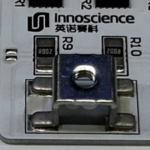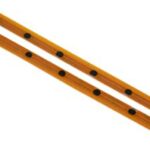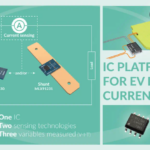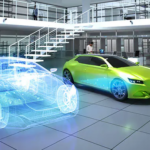Innoscience Technology has launched a new 100V bi-directional member of the company’s VGaN IC family. The first family of VGaN devices rated 40V with a wide on-resistance range (1.2mOhm – 12mOhm) have been successfully deployed in the USB OVP of mobile phones such as OPPO, OnePlus, etc. The new 100V VGaN (INV100FQ030A) can be employed […]
Battery Management
TTape: A simple way to monitor Li-ion battery-pack temperature
A set of temperature-triggered switches alerts you to hot batteries. Li-ion batteries can get hot, which can cause failures or worse in the products they power. Thus, it’s important to monitor their temperature and act before damage occurs. You can monitor temperature with a set of thermocouples, scan them, and write software to produce an […]
PMIC recharges battery or capacitor using energy harvesting
Nexperia announced an expansion to its range of Power ICs with Energy Harvesting solutions to simplify and enhance the performance of low-power Internet of things (IoT) and other embedded applications. The NEH2000BY is a high-performance power management integrated circuit (PMIC) that recharges a battery or storage capacitor using energy harvested from ambient sources, such as […]
2 x 2 mm single-cell Li-ion and Li-Pol charger features automotive start
Halo Microelectronics announced the release of its HL7040C, a highly integrated family of 2x2mm single-cell Li-Ion and Li-Pol linear chargers. The HL7040C is ideal for portable applications, including smartphones, PDAs, MP3 players, and low-powered handheld devices with limited board space, as it operates from either a USB port or an AC adapter. The high-input voltage […]
MOSFETS target EV motor, battery management apps
Magnachip Semiconductor Corporation announced that the company had launched its eighth-generation 150V MXT Metal-Oxide-Semiconductor Field-Effect Transistor (MOSFET)1 optimized for Light Electric Vehicle (LEV) motor controllers and battery management systems (BMSs). Energy efficiency plays a critical role in electric devices regarding power consumption and product stability. This newly-released MOSFET (MDT15N054PTRH) features Magnachip’s eighth-generation trench MOSFET technology […]
Batteries for energy storage apps can provide 60 kWh
Growatt has released the one-fits-all APX HV Battery with leading innovations in performance, operation, protection, and installation. Integrated with the novel soft-switching parallel connection technology, the new battery solution contributes more energy by eliminating the effect of the energy mismatch between packs, allowing each module to fully charge and discharge independently. In addition, the innovation […]
ASIL-compliant current sensors for EV battery management
Melexis reinforces its reputation in the automotive current sensing market by announcing the MLX91230 and the MLX91231. They offer access to shunt or Hall type current sensor technologies. These ASIL-compliant devices can measure voltage, current, and temperature. Customers will be provided with flexibility and design reusability in their electric vehicle (EV) power systems. The MLX91230, […]
Cloud-based digital twin helps improve EV battery performance
NXP Semiconductors has developed a solution to connect its high-voltage battery management system (HVBMS) through its S32G GoldBox vehicle networking reference design to the cloud to leverage an artificial intelligence (AI) powered battery digital twin. By utilizing Electra Vehicles, Inc.’s EVE-Ai 360 Adaptive Controls technology, NXP unleashes the power of digital twin models in the cloud to […]
High-energy cells in CR123A form factor feature 30% more run time
Ultralife Corporation has released the XR123A — a new battery in the CR123A form factor for low to medium-rate applications that require a long service life. This compact and lightweight power source is ideal for use in smoke alarms, LED flashlights, digital cameras, and Internet of Things (IoT) sensors. The XR123A is a primary (non-rechargeable) […]
Battery management system targets 1 kV/2 kA automotive applications
Sensata Technologies announced it will debut a new Battery Management System (BMS), the Lithium Balance n3-BMS, for high voltage applications at the Battery Show North America from September 13 – 15 in Novi, Michigan in booth# 2817. The Lithium Balance n3-BMS is ideal for applications with power up to 1000 volts/2000 amps, especially for battery makers […]











